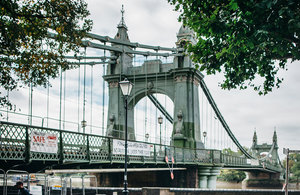Campaign for co-Chair of the Council for Science and Technology
News story
A campaign has launched to select a new co-Chair for the Prime Minister’s Council for Science and Technology.

A campaign to recruit a new independent co-Chair for the Council for Science and Technology has been launched and is open for applications until 22 November 2020.
The Council for Science and Technology advises the Prime Minister on science and technology policy issues across government. It is jointly chaired by the government Chief Scientific Adviser, Sir Patrick Vallance, and an independent co-Chair, currently Dame Nancy Rothwell, President and Vice Chancellor of Manchester University, who is stepping down next year.
The Council for Science and Technology is the government’s highest-level advisory body on science and technology, advising on issues that cut across the full range of government’s responsibilities.
Members of the Council are leading figures in the science and technology community, including presidents from the national academies and UKRI (ex officio), and representation from academia and key high-tech businesses.
The government is seeking applicants who are senior figures in a science, technology, engineering or mathematics field, with a track record of outstanding achievement as a researcher or innovator, and the ability to provide a well-grounded ‘big picture’ perspective on a wide variety of science and technology policy issues.
The full details of the co-Chair recruitment campaign can be found on the Public Appointments website
The work of the Council has directly influenced the government’s research and innovation strategies and high-profile initiatives including the establishment of the Alan Turing Institute and the 100,000 Genomes Project.
The Council’s current work programme includes:
- the advice on meeting government’s long-term objectives for research and development
- taking a systems engineering approach to achieving net zero carbon emissions by 2050
- the contribution of science and technology to inform the government’s levelling up agenda
- and science and technology for a sustainable health and social care system.
Published 30 October 2020

